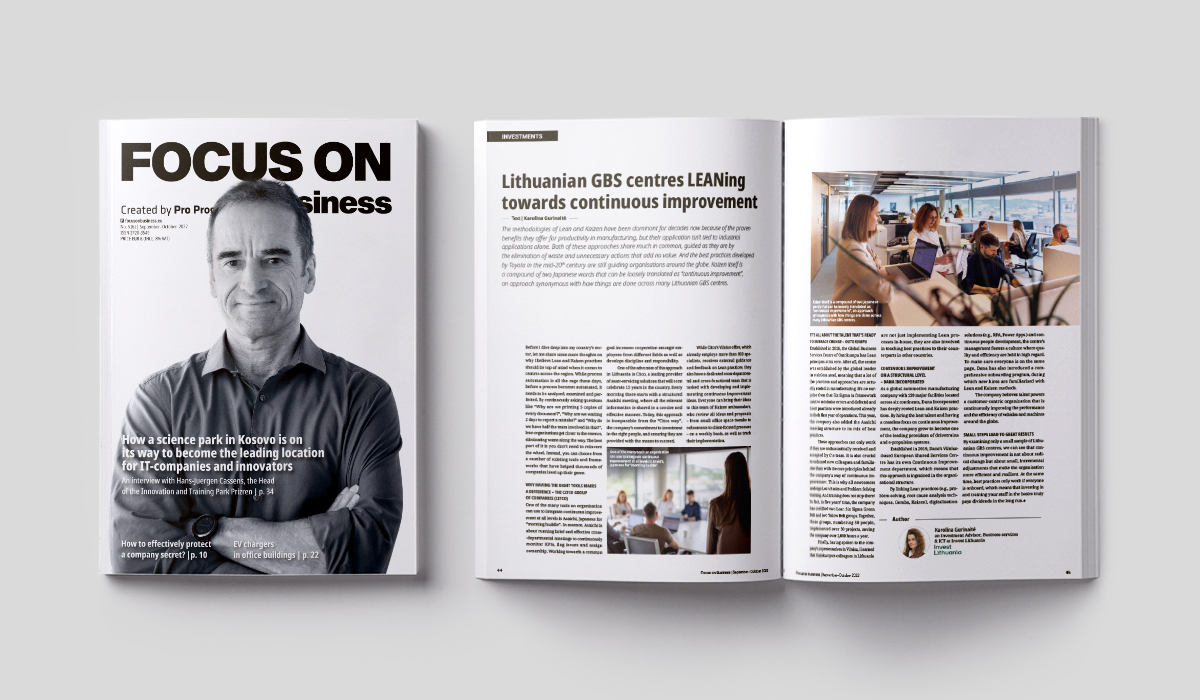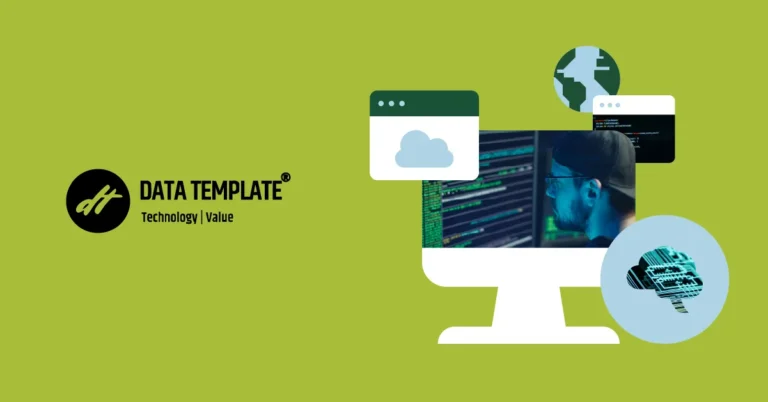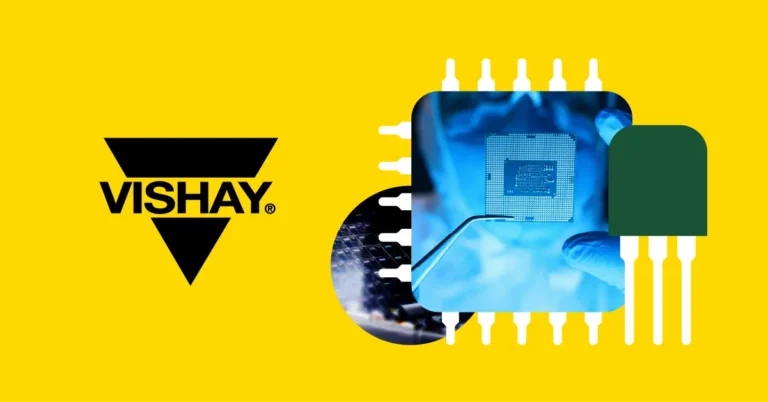This article was originally published on Focus on Business
Author: Karolina Gurinaitė, an Investment Advisor, Business services & ICT at Invest Lithuania
The methodologies of Lean and Kaizen have been dominant for decades now because of the proven benefits they offer for productivity in manufacturing, but their application isn’t tied to industrial applications alone. Both of these approaches share much in common, guided as they are by the elimination of waste and unnecessary actions that add no value. And the best practices developed by Toyota in the mid-20th century are still guiding organisations around the globe. Kaizen itself is a compound of two Japanese words that can be loosely translated as “continuous improvement”, an approach synonymous with how things are done across many Lithuanian GBS centres.
Before I dive deep into my country’s sector, let me share some more thoughts on why I believe Lean and Kaizen practices should be top of mind when it comes to centres across the region. While process automation is all the rage these days, before a process becomes automated, it needs to be analysed, examined and perfected. By continuously asking questions like “Why are we printing 5 copies of every document?”, “Why are we waiting 2 days to report a mistake?” and “Why do we have half the team involved in this?”, lean organisations get closer to the essence, eliminating waste along the way. The best part of it is you don’t need to reinvent the wheel. Instead, you can choose from a number of existing tools and frameworks that have helped thousands of companies level up their game.
Why having the right tools makes a difference – the Citco group of companies (Citco)
One of the many tools an organisation can use to integrate continuous improvement at all levels is Asaichi, Japanese for “morning huddle”. In essence, Asaichi is about running brief and effective cross departmental meetings to continuously monitor KPIs, flag issues and assign ownership. Working towards a common goal increases cooperation amongst employees from different fields as well as develops discipline and responsibility.
One of the advocates of this approach in Lithuania is Citco, a leading provider of asset-servicing solutions that will soon celebrate 15 years in the country. Every morning there starts with a structured Asaichi meeting, where all the relevant information is shared in a concise and effective manner. Today, this approach is inseparable from the “Citco way”, the company’s commitment to investment in the right people, and ensuring they are provided with the means to succeed.
While Citco’s Vilnius office, which already employs more than 800 specialists, receives external guidance and feedback on Lean practices, they also have a dedicated cross-departmental and cross-functional team that is tasked with developing and implementing continuous improvement ideas. Everyone can bring their ideas to this team of Kaizen ambassadors, who review all ideas and proposals – from small office space tweaks to refinements to client-focused processes– on a weekly basis, as well as track their implementation.
It’s all about the talent that’s ready to embrace change – Outokumpu
Established in 2016, the Global Business Services Centre of Outokumpu has Lean principles at its core. After all, the centre was established by the global leader in stainless steel, meaning that a lot of the practices and approaches are actually rooted in manufacturing. It’s no surprise then that Six Sigma (a framework used to minimise errors and defects) and Lean practices were introduced already in their first year of operations. This year, the company also added the Asaichi meeting structure to its mix of best practices.
These approaches can only work if they are enthusiastically received and accepted by the team. It is also crucial to onboard new colleagues and familiarise them with the core principles behind the company’s way of continuous improvement. This is why all newcomers undergo Lean Basics and Problem Solving training. And training does not stop there! In fact, in five years’ time, the company has certified two Lean Six Sigma Green Belt and two Yellow Belt groups. Together, these groups, numbering 50 people, implemented over 30 projects, saving the company over 2000 hours a year.
Finally, having spoken to the company’s representatives in Vilnius, I learned that Outokumpu’s colleagues in Lithuania are not just implementing Lean processes in-house, they are also involved in teaching best practices to their counterparts in other countries.
Continuous improvement on a structural level – Dana Incorporated
As a global automotive manufacturing company with 139 major facilities located across six continents, Dana Incorporated has deeply rooted Lean and Kaizen practices. By hiring the best talent and having a ceaseless focus on continuous improvement, the company grew to become one of the leading providers of drivetrains and e-propulsion systems.
Established in 2019, Dana’s Vilnius-based European Shared Services Centre has its own Continuous Improvement department, which means that this approach is ingrained in the organisational structure.
By linking Lean practices (e.g., problem- solving, root cause analysis techniques, Gemba, Kaizen), digitalisation solutions (e.g., RPA, Power Apps.) and continuous people development, the centre’s management fosters a culture where quality and efficiency are held in high regard. To make sure everyone is on the same page, Dana has also introduced a comprehensive onboarding program, during which new hires are familiarised with Lean and Kaizen methods.
The company believes talent powers a customer-centric organization that is continuously improving the performance and the efficiency of vehicles and machines around the globe.
Small steps lead to great results
By examining only a small sample of Lithuanian GBS centres, we can see that continuous improvement is not about radical change but about small, incremental adjustments that make the organisation more efficient and resilient. At the same time, best practices only work if everyone is onboard, which means that investing in and training your staff in the basics truly pays dividends in the long run.













